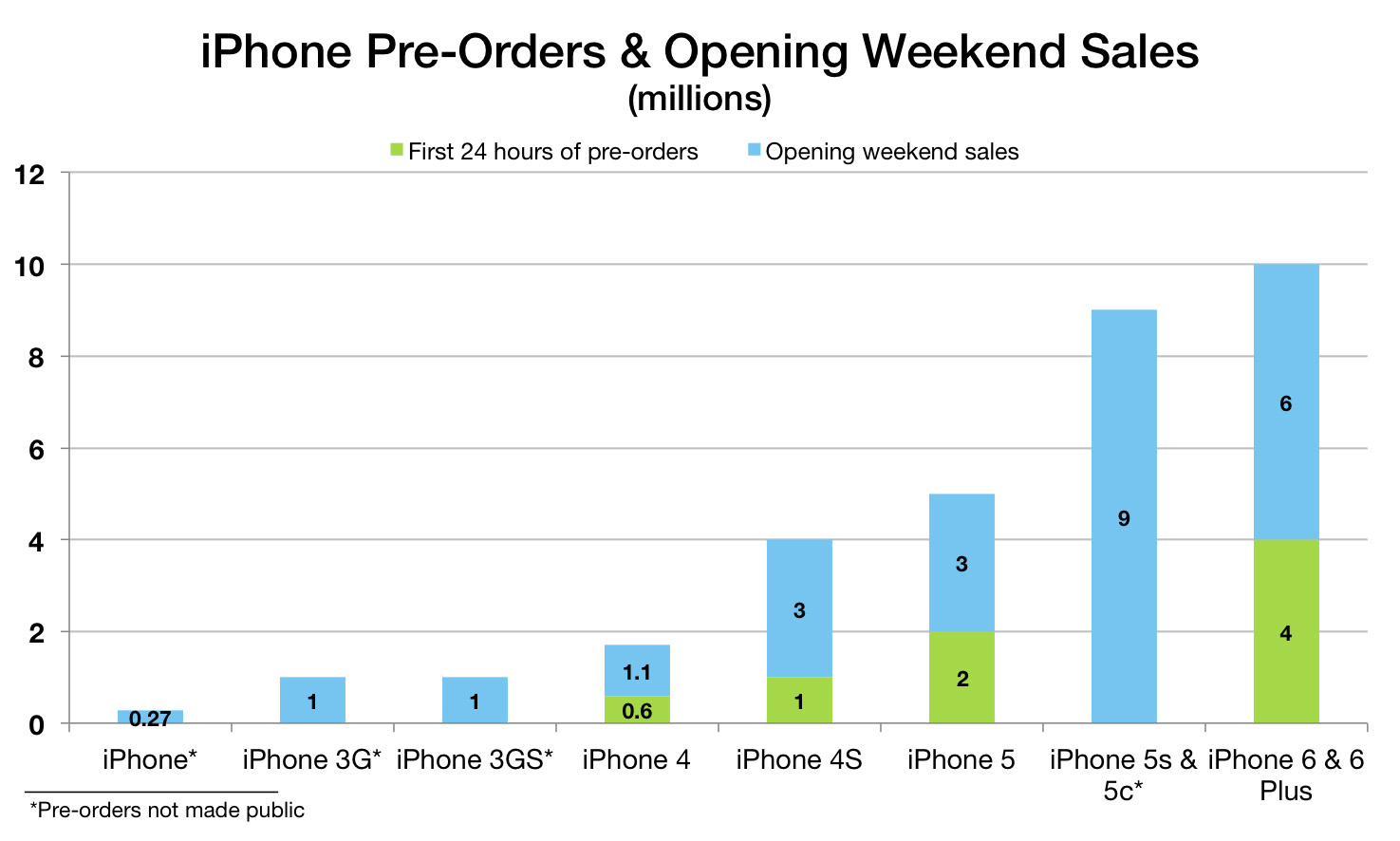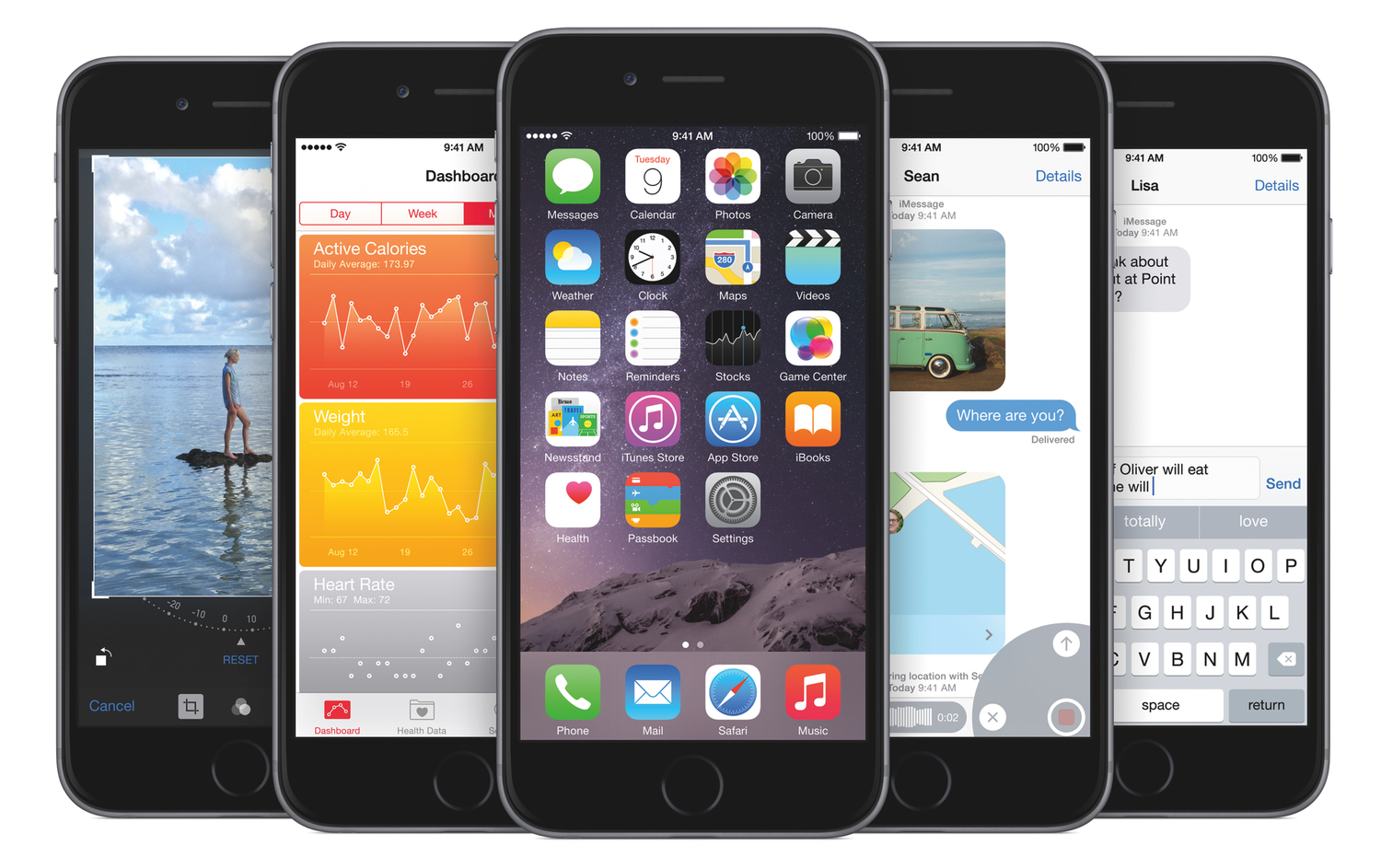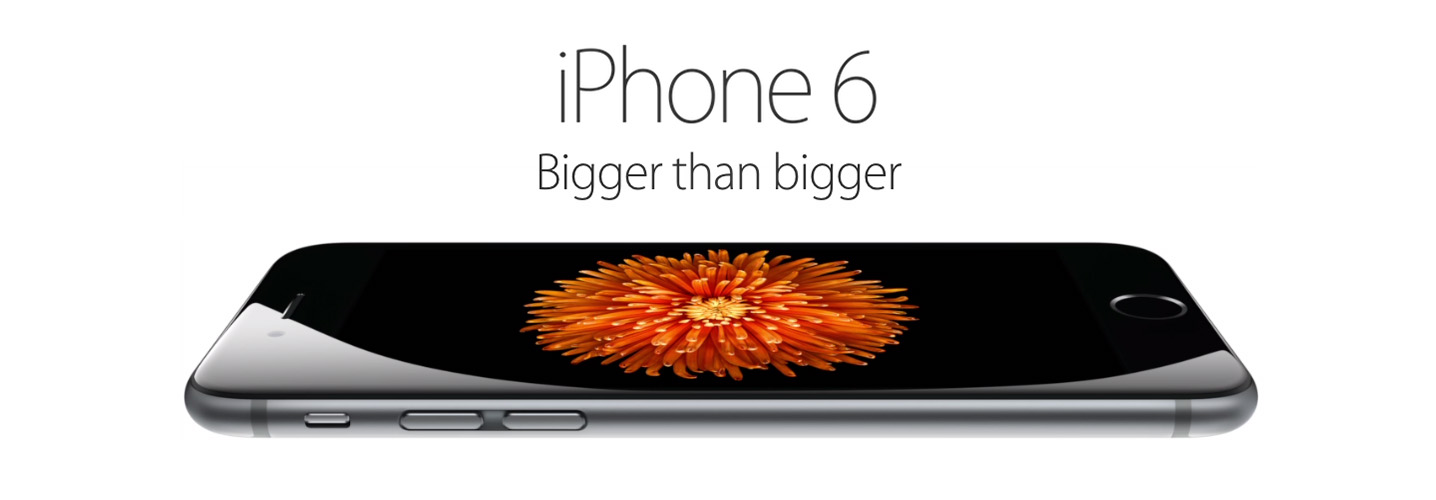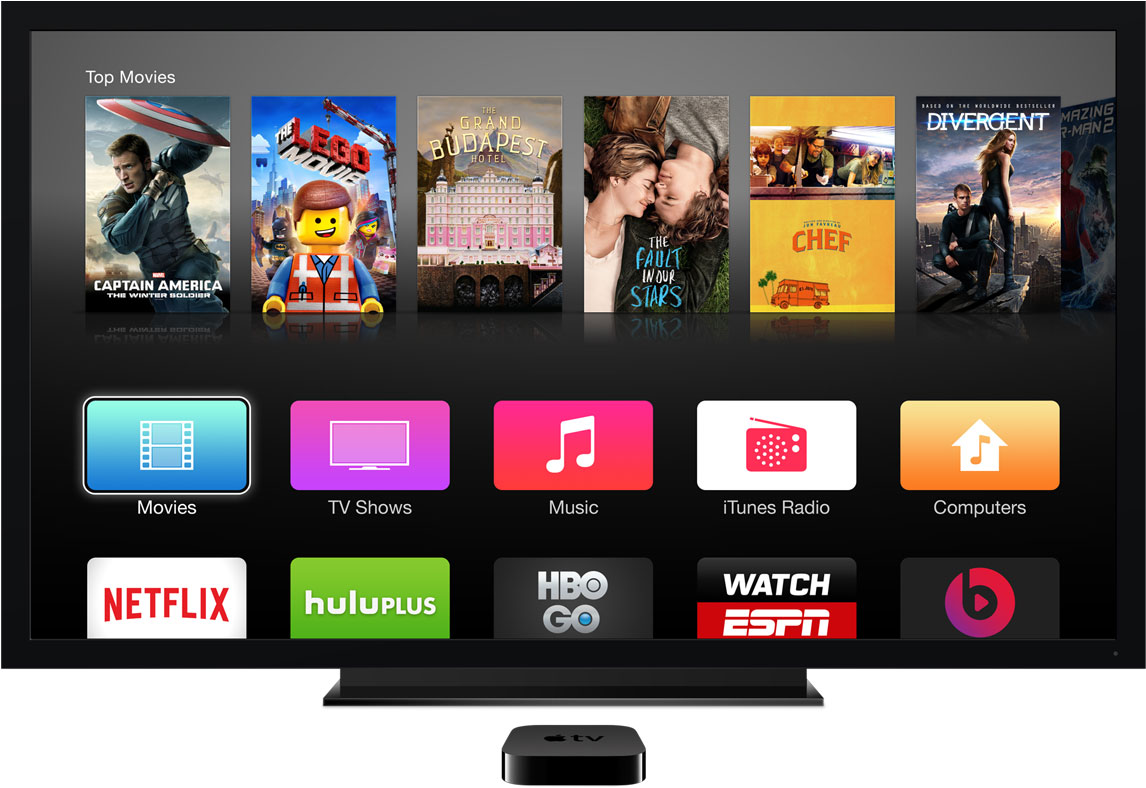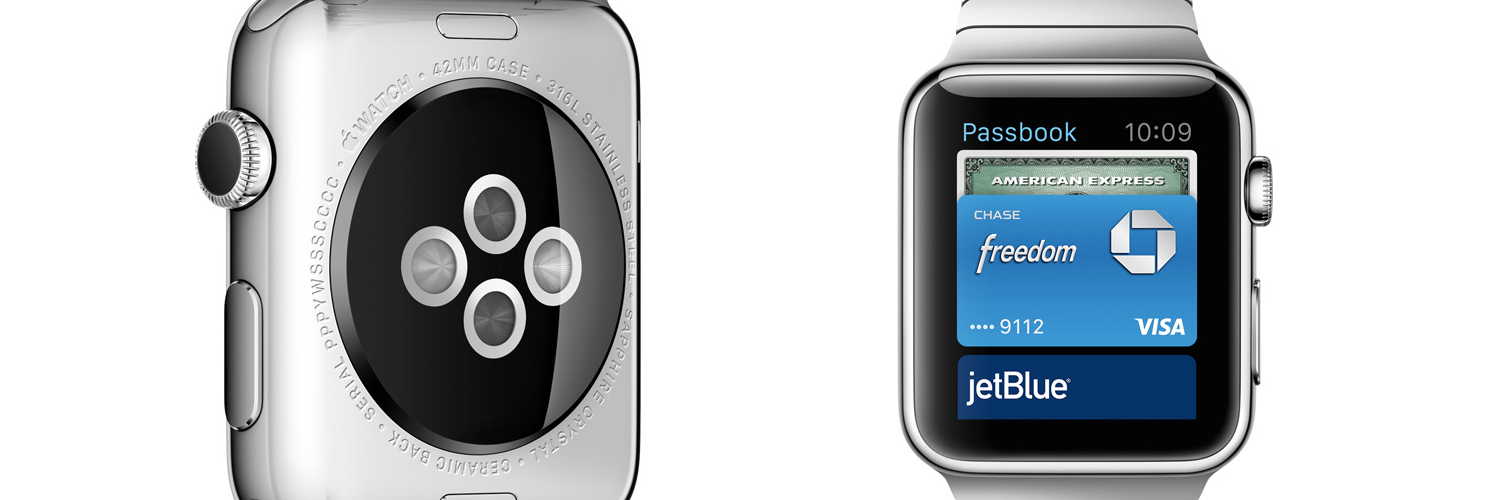This morning, Apple issued a press release announcing that the iPhone 6 and 6 Plus have sold more than 10 million units in their first three days of sales after launching last Friday in the US, Australia, Canada, France, Germany, Hong Kong, Japan, Puerto Rico, Singapore and the UK.
“Sales for iPhone 6 and iPhone 6 Plus exceeded our expectations for the launch weekend, and we couldn’t be happier,” said Tim Cook, Apple’s CEO. “We would like to thank all of our customers for making this our best launch ever, shattering all previous sell-through records by a large margin. While our team managed the manufacturing ramp better than ever before, we could have sold many more iPhones with greater supply and we are working hard to fill orders as quickly as possible.”
10 million units sold over the opening weekend is a new record for iPhone sales. Last year with the iPhone 5s and 5c Apple sold 9 million units and in 2012 Apple sold 5 million units of the iPhone 5. In fact, Apple has consistently beaten their opening weekend iPhone sales every single year.
The iPhone 6 and iPhone 6 Plus will also launch in another 20 countries this Friday, September 26. Those countries include Austria, Belgium, Denmark, Finland, Ireland, Isle of Man, Italy, Liechtenstein, Luxembourg, Netherlands, New Zealand, Norway, Portugal, Qatar, Russia, Saudi Arabia, Spain, Sweden, Switzerland, Taiwan, Turkey and United Arab Emirates.


